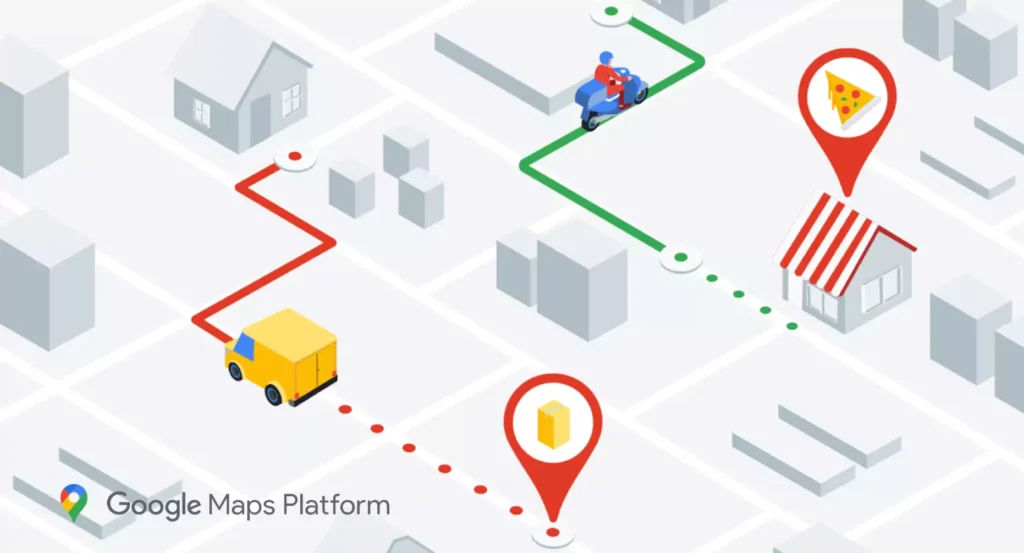A seismic shift is happening in local search, and most big brands haven’t even noticed. While Fortune 500 companies pour millions into national SEO campaigns, savvy local businesses are quietly dominating the most valuable real estate on the internet: Google Maps. Here’s the shocking truth—when someone searches “coffee near me” or “best restaurant Toronto,” they’re not seeing Starbucks or McDonald’s first. They’re seeing Mike’s Coffee House and Maria’s Bistro. This local search revolution is creating a modern gold rush where David doesn’t just compete with Goliath—David wins. And the best part? The tools to stake your claim in this digital gold rush are free, accessible, and devastatingly effective when used correctly.
The 3-Pack Phenomenon: Why Position Beats Budget
Google’s Local 3-Pack—those three businesses that appear prominently in map results—has become the most valuable digital real estate in existence. Studies show that 75% of users never scroll past these top three results. For local searches, this 3-Pack appears above traditional organic results, meaning a small Toronto bakery can appear above Tim Hortons’ corporate website. This isn’t a glitch—it’s Google’s intentional prioritization of local relevance over corporate authority.
The mathematics of local dominance are staggering. A business ranking in the 3-Pack receives 33% of all clicks on average. Compare this to position #1 in traditional organic results, which captures about 28% of clicks. But here’s the kicker—achieving 3-Pack dominance costs a fraction of what big brands spend on SEO. While corporations invest hundreds of thousands in content marketing and link building, local businesses are winning with optimized Google Business Profiles and strategic review management.
The competitive advantage extends beyond visibility. Local 3-Pack results display crucial information—ratings, hours, photos—that build trust before users even click. A local restaurant with 50 five-star reviews appears more trustworthy than a chain with a mediocre 3.5-star average across thousands of locations. This trust factor, combined with prime positioning, explains why smart web design and development now prioritizes local search optimization over traditional SEO tactics.
The Proximity Power Play: Your Secret Weapon Against Giants
Google’s local algorithm weighs proximity heavily—a factor big brands can’t manipulate with marketing budgets. When someone searches for services, Google prioritizes businesses physically close to the searcher. This proximity bias creates an unbeatable advantage for local businesses. Your neighborhood shop literally cannot be outranked by distant competitors for “near me” searches, regardless of their marketing spend.
But proximity alone doesn’t guarantee success. The magic happens when local businesses combine location advantage with optimization excellence. A Toronto hair salon can dominate searches within a 5-kilometer radius by maintaining complete, accurate business information, posting regular updates, and showcasing fresh photos. Meanwhile, national chains struggle with inconsistent information across locations, diluted review scores, and generic content that doesn’t resonate locally.
The proximity advantage multiplies when businesses understand search intent. People searching locally want immediate solutions—a coffee shop they can reach in five minutes, a plumber who can arrive today, a restaurant with tables available tonight. Local businesses can promise and deliver this immediacy. Big brands, constrained by corporate policies and standardized operations, can’t match this agility. Smart content marketing for local businesses emphasizes this immediate availability and personal service that chains can’t replicate.
The Review Revolution: How Authenticity Beats Advertising
Here’s what keeps CMOs at major corporations awake at night: authentic local reviews carry more weight than million-dollar advertising campaigns. A neighborhood restaurant with 100 passionate reviews outranks chain competitors with thousands of lukewarm ratings. Google’s algorithm recognizes and rewards this authentic engagement, creating opportunities for local businesses to build unassailable competitive moats.
The psychology behind review dominance is fascinating. Consumers trust specific, detailed reviews from locals over generic feedback. When someone writes, “The owner, Sarah, remembered my daughter’s birthday and brought out a surprise dessert,” it resonates more than hundreds of “food was okay” reviews at chains. This personal touch—impossible for corporations to replicate at scale—becomes a powerful differentiator in local search rankings and customer decision-making.
Strategic review management has become the secret weapon of successful local businesses. They don’t just collect reviews—they cultivate them. Responding to every review, addressing concerns personally, and showcasing customer stories through social media marketing creates a virtuous cycle. Happy customers become brand ambassadors, their authentic endorsements attracting more customers who leave more positive reviews. This organic growth pattern is something big brands’ marketing budgets simply can’t buy.
The Mobile Moment: Capturing High-Intent Customers
The explosion of mobile search has tilted the playing field even further toward local businesses. Over 80% of local searches now happen on mobile devices, often from people ready to make immediate purchases. These “micro-moments”—when someone needs something right now—represent the highest-converting traffic in digital marketing. Local businesses positioned to capture these moments are printing money while big brands struggle with corporate websites that load slowly and convert poorly on mobile.
Mobile local searches have unique characteristics that favor small businesses. Users want quick answers: hours, directions, phone numbers, menus. Google Business Profiles deliver this information instantly, before users even visit websites. A well-optimized local business can convert a mobile searcher to a customer in seconds—from search to phone call or direction request. This frictionless experience is what modern consumers expect and what local businesses can deliver better than chains.
The conversion rates tell the story. Mobile local searches convert at 80% within 24 hours—astronomical compared to traditional digital marketing channels. A Toronto auto repair shop optimizing for “oil change near me” isn’t just competing with Jiffy Lube—they’re winning. By ensuring their Google Business Profile loads instantly, displays current wait times, and enables one-click calling, they capture high-intent customers at the exact moment of need.
The Category Conquest: Dominating Niche Searches
While big brands fight over broad keywords, local businesses are conquering profitable niches. Google’s local algorithm favors specific category matches over general authority. A small “vegan bakery” outranks Whole Foods for “vegan birthday cake Toronto” because their entire business aligns with the search intent. This category specialization creates defensible positions that marketing budgets can’t overcome.
The opportunity in niche domination extends beyond primary categories. Google allows businesses to select multiple relevant categories, creating various entry points for discovery. A local business offering “laptop repair” might also rank for “data recovery,” “screen replacement,” and “computer diagnostics.” Each category represents a different customer need and search pattern. Meanwhile, Best Buy’s Geek Squad, trying to be everything to everyone, ranks poorly for these specific services.
Smart local businesses are building entire strategies around category conquest. They identify underserved niches, optimize their profiles for these specific categories, and create supporting content that reinforces their expertise. A Toronto wedding photographer doesn’t compete with “photographers”—they dominate “intimate elopement photography” or “multicultural wedding specialists.” This focused approach, supported by strategic SEO, creates unbeatable positions in profitable niches.
The Attribution Advantage: Proving ROI That Matters
One of local businesses’ greatest advantages is the ability to track real business impact from Google Maps optimization. Unlike traditional SEO where attribution gets murky, Google provides detailed insights on local search performance: how many people called, requested directions, or visited websites. This clear attribution allows local businesses to optimize ruthlessly based on what actually drives revenue.
The metrics that matter for local search differ from traditional digital marketing. Instead of tracking impressions or clicks, successful local businesses monitor “direction requests” and “calls from search.” These high-intent actions directly correlate with foot traffic and sales. A restaurant seeing 500 monthly direction requests knows their Google Maps optimization delivers real customers, not just vanity metrics.
This attribution clarity enables rapid optimization cycles. Local businesses can test different photos, update descriptions, and modify hours to see immediate impact on customer actions. They can identify which attributes drive calls (mentioning “free estimates”) versus visits (highlighting “ample parking”). This real-time feedback loop, unavailable to big brands managing hundreds of locations, allows local businesses to continuously improve their competitive position.
The Integration Opportunity: Bridging Digital and Physical
The most sophisticated local businesses are creating seamless integrations between their Google Maps presence and physical operations. QR codes on receipts encourage reviews. In-store signage promotes checking in on Google. Physical print and ship marketing materials include maps screenshots showing their prominent position. This omnichannel approach amplifies their local search advantage.
Integration extends to operational alignment. Smart businesses update Google Business hours in real-time during holidays. They post photos of daily specials each morning. They use Google’s messaging feature to answer customer questions instantly. This operational integration—impossible for chains with corporate bureaucracy—creates superior customer experiences that generate more positive reviews and higher rankings.
The bridging of digital and physical creates competitive moats big brands can’t cross. When a local bookstore hosts author events, they create Google Posts that appear in search results. When a restaurant introduces seasonal menus, fresh photos attract new customers. This dynamic, responsive presence contrasts sharply with chains’ static, corporate-controlled profiles. Local businesses that master this integration don’t just compete with big brands—they make them irrelevant.
Your Local Domination Playbook: Action Steps for This Week
The Google Maps gold rush rewards action over analysis. Start by claiming and verifying your Google Business Profile if you haven’t already. This basic step puts you ahead of 30% of local businesses who haven’t even staked their claim. Complete every section meticulously—incomplete profiles rank lower and convert worse than optimized competitors.
Next, audit your current local presence against top competitors. Search for your main keywords plus your city name. Who appears in the 3-Pack? What are they doing that you’re not? Often, the difference between position #4 and position #1 is just a handful of optimizations: better photos, more complete information, consistent review responses. Document these gaps and create a weekly optimization schedule.
Focus your first month on review acceleration. Implement a systematic process for requesting reviews from happy customers. Train staff to mention reviews at transaction completion. Create email sequences that make reviewing easy. Remember, going from 10 to 50 reviews can transform your local visibility. This isn’t about gaming the system—it’s about showcasing the customer satisfaction big brands can’t match.
The Future of Local: Why This Opportunity Won’t Last Forever
The Google Maps gold rush won’t last forever. As more businesses recognize the opportunity, competition will intensify. Google will likely monetize this valuable real estate more aggressively. Big brands will eventually adapt their strategies to compete more effectively locally. The businesses that establish dominant positions now will have defensible advantages when competition heats up.
Early movers in local search are building sustainable competitive advantages. Every positive review increases the barrier for competitors. Every month at the top of local rankings strengthens brand recognition. Every optimization compounds previous improvements. The businesses taking action today are securing their market position for years to come.
The democratization of marketing through Google Maps represents a rare window where small businesses can genuinely outmaneuver giant competitors. But windows close. The tools are free today, the competition is manageable, and the rewards are immediate. The question isn’t whether to optimize for local search—it’s whether you’ll act quickly enough to claim your share of the gold rush.
Your Moment to Strike Gold
The Google Maps gold rush represents the greatest opportunity for local businesses to steal market share from big brands in decades. While corporations struggle with bureaucracy, standardization, and geographic limitations, agile local businesses are claiming the most valuable digital real estate available. They’re not just surviving against giant competitors—they’re thriving.
This isn’t about complex strategies or massive budgets. It’s about understanding that local search has fundamentally changed how customers find businesses. It’s about recognizing that proximity, authenticity, and responsiveness matter more than corporate marketing muscle. Most importantly, it’s about taking action while the opportunity remains wide open.
The gold rush is happening now. Every day you delay is another day competitors strengthen their position. The tools are free, the process is straightforward, and the rewards are transformative. The only question is whether you’ll be one of the local businesses stealing customers from big brands, or one of the businesses wondering why their customers disappeared.
Ready to stake your claim in the Google Maps gold rush? ByteInspired specializes in local search domination strategies that put Toronto businesses at the top of Google Maps results. Our proven optimization process has helped local businesses increase foot traffic by an average of 76% within 90 days. Don’t let another day pass while competitors claim your customers. Contact us today to start your journey from local business to local legend.
To visit our social media please click on Facebook and Instagram





